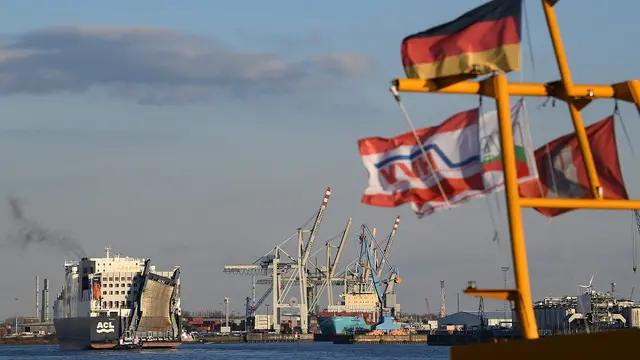A few things – or people – may come to mind when talking about the Philippines. There’s Imelda Marcos and her infamous 3,000 pairs of shoes, Manny Pacquiao and boxing, mangoes and bananas, and jeepneys – the country’s king of the road.
Jeepneys stand out easily in Manila’s traffic. Their shiny, steely exterior coupled with colorful, often kitschy designs make them a public transport unlike anything in the world. To foreigners, they’re eye-catching; to Filipinos, they’re a cultural icon.
But they’ve also stayed pretty much the same since the end of World War Two. In fact, jeepneys were patterned after that era’s American jeeps. However, the ones that ply Philippine roads today run on second-hand engines, are often overcrowded and overloaded, and don’t have seat belts. Philippine President Rodrigo Duterte says they’re a hazard.
“You are poisoning the people. (By) 2030, one-third of Filipinos, mostly poor, (will) die of lung cancer because you don’t want to fix your engines,” Duterte said in a speech in Marawi City in October, aimed at jeepney drivers holding a strike in Manila at the time.
The strike was in response to the government’s jeepney modernization program, which could go into its pilot phase by January. It had been in the works for years but the Duterte administration has shown the strongest resolve to make it happen. In October, the public had their first glimpse of the new jeepneys when prototypes were launched in an exhibit. They’re intended to replace more than 200,000 jeepneys that are over 15 years old.
One of the manufacturers of the so-called "modern jeepneys" is Centro. CGTN got a chance to visit one of company’s plants to see their prototype jeepneys up close. They did not look like the traditional jeepneys at all; they look more like mini-buses. But the company’s business development manager, Roberto Cruz, was quick to point to something painted that was made to look like the trademark front grills of jeepneys in one of the prototypes.
What Cruz emphasized during the tour, however, were the safety and comfort features of the new jeepneys. He showed us side entrances that were friendly to people with disability, provisions for an automated collection system, security cameras, air-conditioning, and a much larger capacity for passengers.
“With the standing capacity, they can have more incremental income because of the additional passengers,” said Cruz, who added that the units’ Euro 4-compliant engines will not only cut smoke emissions by about 90 percent, but can also help drivers and operators save money.
“In terms of the new engines and parts that they’re going to use, there’d be less maintenance costs and therefore more profit.”
In addition, the government has assured jeepney drivers and operators that they will get financial assistance, but the country’s largest union of jeepney drivers, PISTON, is not convinced. The only ones who will profit, they say, are the businesses that will be selling the new jeepneys. The group’s leaders say that at 30,000 to 36,000 US dollars per unit, they can’t even afford the new jeepneys to begin with, much less profit from them.
“Where will operators get the money to pay the loan?
Not only that, under the program, individuals will not be allowed to operate. They have to be employed by a corporation. This will kill our livelihood,” Mody Floranda, head of the group’s Metro Manila chapter, told CGTN during a demonstration in early December.
Senator Grace Poe, chairwoman of the Committee on Public Services, is not convinced either that the government is ready for a full-on jeepney modernization program. She says the current budget of 40 million US dollars would only be enough to buy 25,000 new jeepneys.
Poe suggested the program be implemented in phases, but PISTON wants a different approach.
“We do not oppose modernization. But what would be better is for the government to nationalize the industry so we can make our own jeepneys without the need for foreign investors,” said Floranda.
However it’s done, regular jeepney passengers who spoke to CGTN say they are ready for a better ride.
“It’s time,” one man said. “Because those old jeepneys keep on breaking down.”
“It means progress, so I’m for it,” another passenger said. “But I hope the government considers the welfare of the hardworking drivers as well.”
(CGTN)
 简体中文
简体中文

